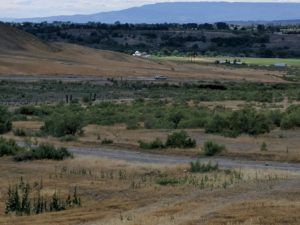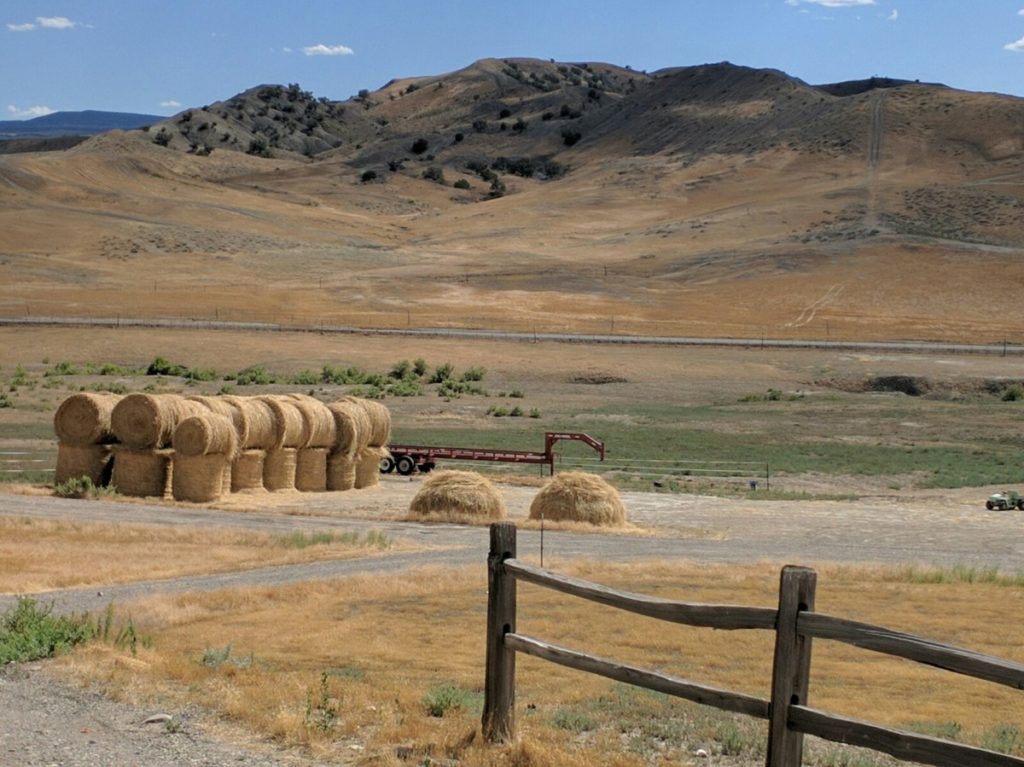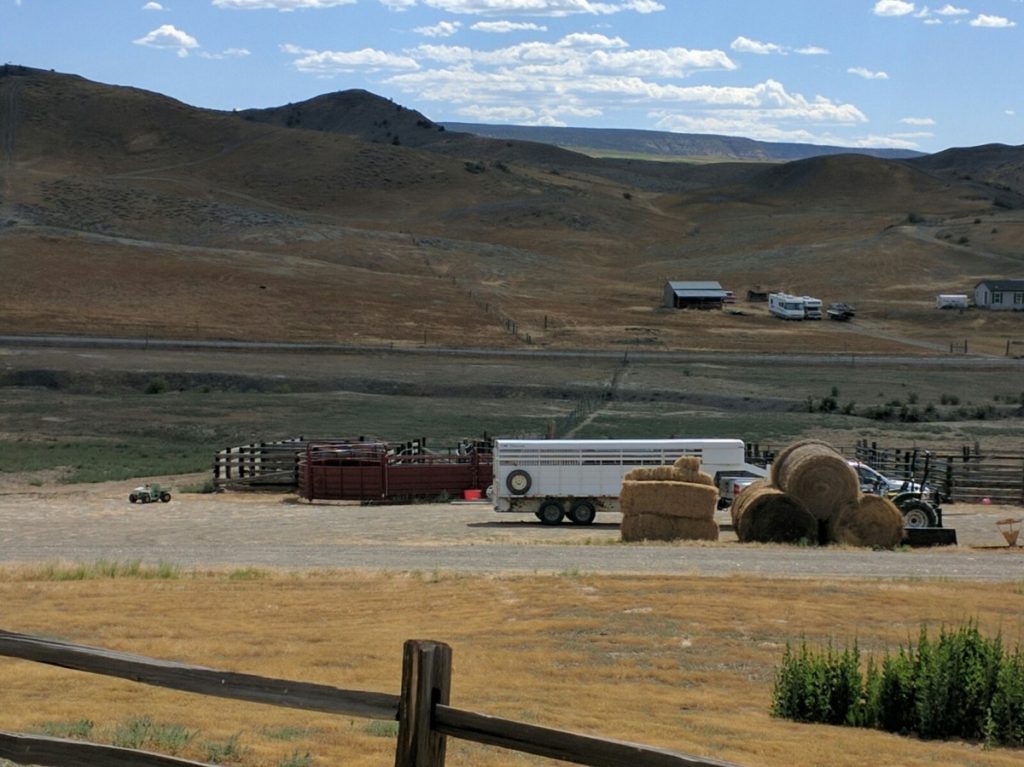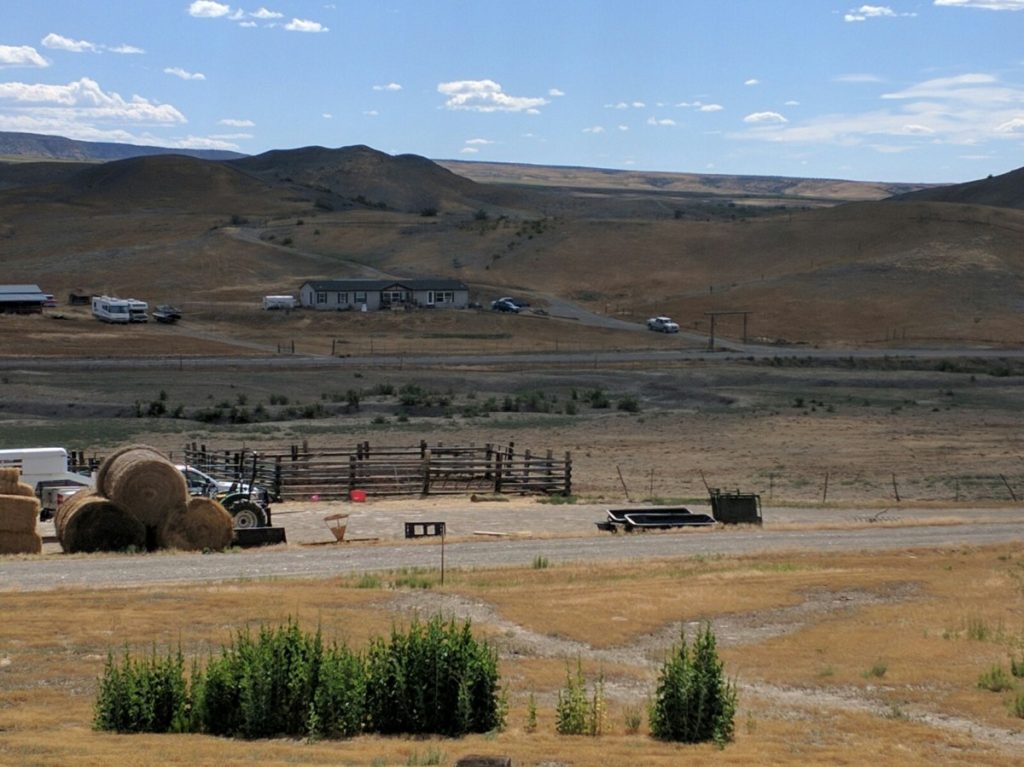The first book I ever read through completely about alternatives to conventional land and animal management–not bought, but read–was Holistic Resource Management by Allan Savory.
It was really exciting to see his principles demonstrated right before my eyes. I started noticing things I hadn’t before, like that the grass was better in the bar ditches beside the road than in the pastures. Even the horse pasture started growing things it had never grown before and was noticeably more lush when we took them off and moved to a different pasture sooner than normal.
Our home place, where the horses were kept is unirrigated desert. We call it “dobies,” it is very dense clay that has hard cap in no time. Only thing that grows normally is cheat grass, sage, and scrub brush. It’s very alkaline, with alkali white being the indicator that the driveway down by the corrals is dry enough to drive on. The horse “pasture” was really a neat experiment. Who knew that it could actually grow more grass. Cheat grass, but still, it was green for a bit. With the horses breaking up the hard cap, and then taking them off, it let the seeds germinate and take hold. Of course, everything burned up in the summer heat, but the amount of grass increase was really quite astounding.
For the cows, after fall pasture is exhausted on the leases, we start feeding hay (sometimes as late as the middle of January, sometimes as early as the second week in December). In Spring, we bring cows down to the house. We feed large rounds and we feed generally with two different methods: scrape/fork hay off a bale held by a moving tractor or dump a round bale in a feeder and let the girls free feed.
Utilization of feed–how much goes into the cow vs. how much ends up ground into the dirt–is much better with the first method. We can restrict how much they get by forking, so they are more likely to clean it up. When the bale is just dumped in a round bale feeder, the girls act like fat kids at an all you can eat buffet. It is limitless, as far as they are concerned. There is no need to clean up. They can spread it all over, trample it, poop on it, pee on it, and hey look, those silly humans will just come put another bale in when we start bellowing. And they are right.
So it’s really aggravating to waste hay. Seeing those cows pull huge masses of hay out of the feeder with only about 1/8 of it ending up in their mouth and the rest on the ground, where they proceeded to trample, pee, and poop on it, is quite disturbing. Hay is money. Not just money. It is *cash.* We pay for the lease, we pay for the custom haying, we pay the fuel to use our tractor, truck, and hay trailer to pick up and haul the hay. There are real expenses and they take real money.
Wonder why we would do it? Because we’re lazy. Just kidding. Feeding in round bale feeders is easier, maybe, but that’s not why we do it.
Here’s the idea, well bunch of ideas:
- Feed cows.
- Keep cows fed and in the pasture, instead of them pushing fences.
- Add organic material to the dobie ground.
The soil just doesn’t have enough organic material to hold water, and its too alkaline. The hay and cow manure add organic material, let the soil hold more water, and change the alkalinity of the soil to help grow….weeds. Forbs. Something for the cows to munch on and occupy themselves. To be completely honest, Jeramie looks at me like I’ve grown another head when I talk about the change in alkalinity. I don’t have tests to show it, but I do have experience and examples that make it a sound hypothesis. Maybe not scientifically proven, but definitely is a strong possibility. Something is going on down there…
It is our dry lot ground, ground we put the cows on in the spring so they aren’t tearing up grass in the mud season. We do have more than just the cow pasture of it, though, a whole field next to it. Same story, dobie dirt.
Actually, the field next to it, now called “the horse pasture” because after the other horse pasture was up next to the house and just made with temporary electric fence; the two fields next to each other have some permanent fencing and the rest is temporary electric. The horses stay in the electric fence when it isn’t even charged. Well, George, my gelding, stays in. Hope, Charlie’s horse, has discovered that going through uncharged tape is no big deal. Have to work on charging it when we bring Hope back down to the house (took her up to Cox’s and the girl across the street is working with Hope and Charlie).
The horse pasture used to be the cow pasture. Even when it was the horse pasture, a cow or two would crawl the fence to have their calf in that field (I have pictures, Mr. Perfect was born in that field after his dam, Perfection, crawled the fence). After running the cows in that field for a few years, there was a noticeable difference in the water cycle/water retention ability of the soil. That field will still be green when the rest of the …
And it was at this point I looked out the window and said to myself, “Hey, check that out!” and had to go take pictures. Pictures are worth 1,000 words, right?

The horse pasture, now without a fence, across the driveway. It was about 4 years ago that we had the horses in the area. The lushness has died down, very brittle environment.

View of the horse pasture, facing southwest from the front of the house.
Notice the green in the pasture, behind the stacked rounds. There is a gully in the middle of the field, then a bit more pasture, a fence, then the main road. Across the main road is BLM ground.

Another view of the horse pasture.
The whole field stays green longer than the rest of the surrounding area, but the area that the cattle were on the most, where they were fed and hung out at, has the most improvement. It’s weeds, but it’s green. And it isn’t just cheat grass. It is different types of weeds, with broader leaves.

The corrals, with the “line fence”, which divides the horse pasture (left) and the cow pasture (right).

Continuing to the cow pasture. The green right in front (the front yard) is weeds that stay green because that is where the leach field is for the septic. We transplanted a few elm trees last spring. Don’t know that they are going to make it after the grasshoppers got to them and ate all the leaves this spring.
We fed hay in the cow pasture this spring. There is some green here and there, but it will need a lot more organic material before it is going to start being green, I think. Took two or three years in the horse pasture.
Just found out we have irrigation water. Who knew? Exciting. The problem is we have to spend a lot of money to use it. We have to put in a collection system, a pump, plus sprinklers (4 large guns should cover it, maybe…). At one time we put gated pipe in, but the soil has too much clay for the water to spread. It would just run down the marks and create hard cap.
Now we are taking about discing the field after we spread the manure pile from cleaning out the corrals the last few years (and they need cleaned again), seeding it down–again–and irrigating it. Need to be able to afford all of it at once. It only takes money.




